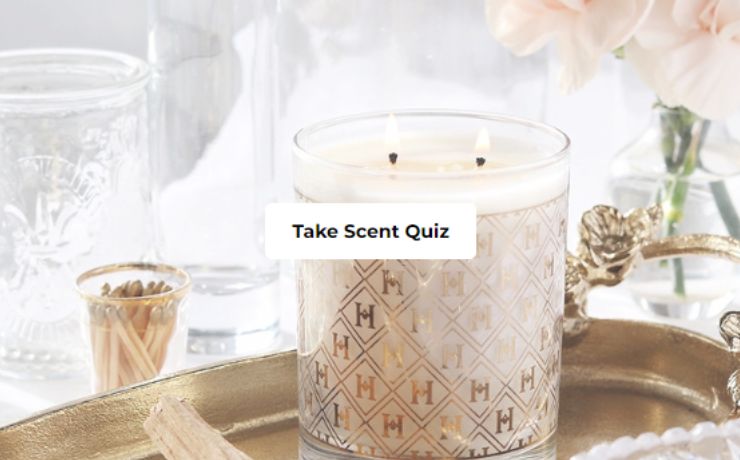Where Does The Wax Go When You Burn a Candle?

Imagine inhaling the soothing aroma of a luxury candle. You take a deep breath and your whole body relaxes. You peer down at the candle’s flame, noticing how it’s reflection gleams off the translucent red rim of the glass jar. Your gaze turns towards the wax.
Somehow, the candle wax mysteriously diminishes into a glowing puddle that seems to get smaller and smaller as the hours pass by.
Where does all of that candle wax go? We're so glad you asked, and in this article we'll delve into the science behind this seemingly magical phenomenon.
So Where Does All of That Candle Wax Go?
When you burn a candle, wax transforms from it’s solid form and is released into the air as carbon dioxide and water vapor.
The act of candle burning is a combustion reaction. In these reactions, fuel is ignited in the presence of oxygen to produce heat, light, and an oxide compound (one or more oxygen atoms combined with another element).
Here's how the combustion reaction works in a candle:
Candle wax is made of hydrogen (H) and carbon (C) atoms (hydrocarbons). When you light the wick, the heat of the flame causes some of the wax to melt.
The candle wick, behaving like an absorbent towel, sucks the liquid wax upward into the flame. The hydrogen and carbon molecules get so hot in the flame that they turn into gas.
These hydrocarbons then react with oxygen (O) in the air to form carbon dioxide (CO2) and water vapor (H2O), while also releasing energy in the form of heat and light.
One fourths of the energy created during this combustion process is given off as flame heat, continuing the candle burning cycle until the fuel source, aka the candle wax, is used up or the heat is eliminated.
What Causes Candles To Produce Smoke and Soot
While you don’t need to worry about breathing in the carbon dioxide or water molecules produced from vaporized wax during a clean candle burning process, you should take the proper care to avoid the production of smoke and soot.
Smoke and soot, a chalk-like black substance made of carbon particles, are products of an incomplete combustion reaction.
In a normal combustion reaction, candle wax melts at the same rate that it fuels the flame, resulting in an even burn. However, incomplete combustion occurs when this balance gets out of whack. When the wax is sucked into the flame faster than it can be burned, it results in smoke and soot.
It’s typical for your candle to take a second to get into a stable state of combustion. You might see your candle stutter for a few minutes right after it has been lit before calming into a steady burning flame.
For more information about that, check out our article explaining how soot turns candle jars black.
How To Avoid Candle Soot
1. Purchase Candles Made of High Quality Wax
At the Harlem Candle Company, our luxury candles are made from natural, soy-based wax, which has a lower melting point and burns more cleanly than candles made with paraffin.
2. Trim Candle Wicks Regularly
The longer the length of the exposed candle wick, the bigger and hotter the flame usually is. This throws off the balance in the combustion process, melting the upper layer of candle wax faster, creating more fuel, and resulting excess soot.
That's why it’s essential to trim your wick regularly.
3. Extinguish Your Candle with a Candle Snuffer
As easy as it is to haphazardly blow out your candle, we strongly suggest using a candle snuffer instead.
Blowing out a candle produces a small burst of smoke and soot that can also damage the wick, whereas using a candle snuffer cleanly stops the flame.
4. Place Candles Away from Drafts
You might notice the flame of your candle start to flicker in rooms with large amounts of airflow. This is a sign of an incomplete combustion reaction. Avoid burning your candle in drafty areas of the house.

Thanks for reading! Now that you understand a bit of the science behind how candles work and where the wax goes, we hope that will it'll add to the pleasure and magicalness you experience the next time you burn your favorite candle.





